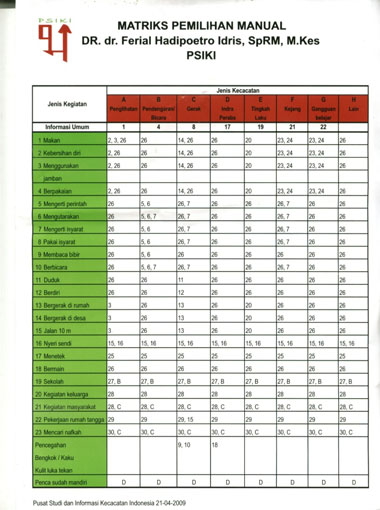The 3rd Asia-Pacific CBR Congress
Non Handicapping Environment in CBR area
Ferial Hadipoetro Idris
PSIKI/FKKUMJ/ CBR net work Indonesia
Introduction
Based on the WHO definition , a handicap is a disadvantage for a given individual, resulting from an impairment or a disability, that limits or prevents the fulfillment of a role for that individual. An impairment is any loss or disturbance of psychological, physiological or anatomical structure or function. Impairments are problems in body function or structur such as a significant deviation or loss. Body functions are the physiological functions of body systems, including psychological functions. Body structures are anatomical parts of body (human organism as a whole. A disability is any restriction or lack of ability to perform an activity for a human being. Disability serves as un umbrella term for impairments, activity limitations or participation restrictions. Activity is the execution of a task or action by an individual. Participation is involvement in a life situation. Activity limitations are difficulties an individual may have in executing activities. Participation restrictions are problems an individual may experience in involvement in life situation.
Environmental factors are eksternal factor to individuals, make up the physical, social and attitudinal environment in which people live and conduct their lives as a member of society. Environmental factors can have a positive or negative influence on the individual performance as a member of society, on the individual’s capacity or on the individual’s body function or structure.
CBR area is an area in which CBR has been implemented. CBR is a community development to empower PWD (People With Disabilities) in all aspect of life, the family and the community .
PWD is like non PWD , PWD need inclusiveness with their family and their community.
To be able living inclusive PWD need acessibility Physic and non physic in their environment or living on nonhandicapping environment.
Non handicapping environment can be realized by implementing standards and technical guidance of accessibility on Building and Environment from Ministry of Public Work, which has been published since 1998 and through implementation of adapted WHO CBR Program since 1985.
Objective: to establish non handicapping environment in CBR area
Method:
- dessimination information to local government in CBR area
The role of local government is very important in CBR , legality, local authority, protection, regulatory, responsibility , that is why local government should be well informed about CBR, goal, process, activity, and coping community problem. - miniworkshop in village level
The goal of mini workshop is making same perception of CBR, encourage willingness to do CBR as a need, getting comitment, and make plan to do CBR - training CBR volunteers
The goal of training is CBR volunteers able to doself survey to detect PWD and to choose CBR manual for each PWD using CBR matrix.
CBR matrix is a matrix consist of columns and rows. The colums are type of disabilities based on form 1 and the rows are capability of PWD based on form 2. (appendix 1) - implementing adapted WHO CBR guide and manuals.
There are 4 guidence books for formal and informal leaders, CBR caders, regular class teacher and PWD . There are 30 manuals for family as trainer for family member who has disability.
Results:
Non handicaping environment in CBR area has been developed since 1985, especially developing non physic acessibility, through changes of knowledge, skill and attitude of local authority, formal and informal leaders, CBR cadres, the family, the community and the PWD them selves, in CBR area. So they are a aware and implement adapted WHO CBR guide and manuals to include establishment non handicaping environment
- local government
Local government support CBR by recognize CBR program exist in their respective area, they understand more of CRPD, give better access to PWD in health services, social services, education services, and livelihood, give motivation to PWD and family to empowere themselves. With improvement of knowledge, skill and attitude about non handicaping environment from the leaders at last non handicaping environment will be avaialble in CBR area. - CBR volunteers
Every commune in CBR area has 4-6 CBR volunteers, we call them CBR cadres.
The role of CBR cadres is to detect PWD through self survey, house to house survey, using form 1 and 2 , and choosing manuals for each PWD using CBR house hold manuals matrix, choosing trainer from family member. With improvement of knowledge , skill and attitude of CBR cadres toward non handicaping environment at last non handicaping environment will be available in CBR area. - Family
Family is the trainer for PWD using 30 packages adapted CBR manuals. With improvement of knowledge , skill and attitude of the family toward non handicaping environment at last non handicaping environment will be available in CBR area. - PWD
PWD gradually improve their quality of life due to the living in non handicaping environment, better accessibility. There are 23 criterias of independency. - Community
The community gradually improve their knowledge, skill and attitude toward PWD and give suport to provide non handicaping environment.
Conclussion: gradually improvement of establishement non handicaping enviroment in CBR area
Appendix
Slide 1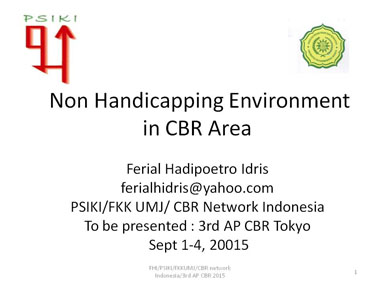 (Slide 1 text)
(Slide 1 text)
Slide 2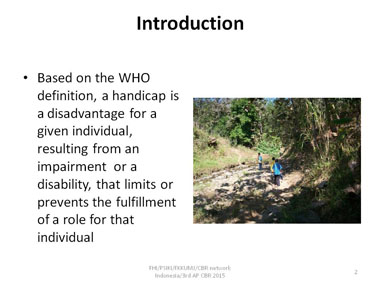 (Slide 2 text)
(Slide 2 text)
Slide 3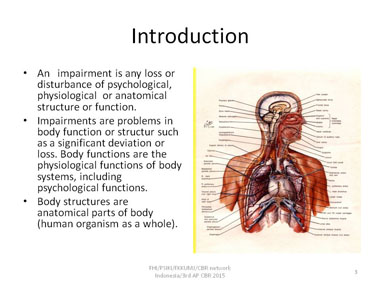 (Slide 3 text)
(Slide 3 text)
Slide 4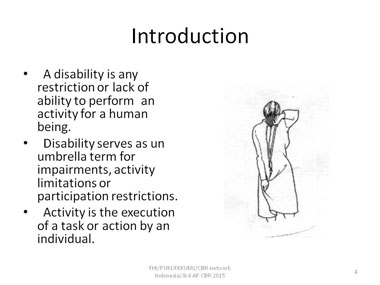 (Slide 4 text)
(Slide 4 text)
Slide 5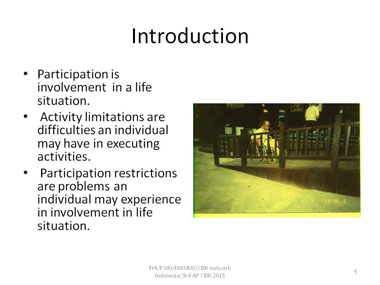 (Slide 5 text)
(Slide 5 text)
Slide 6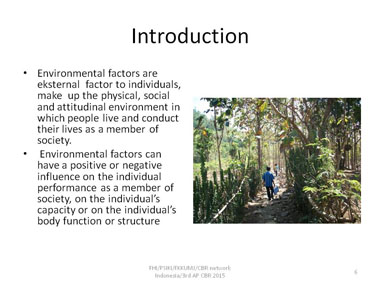 (Slide 6 text)
(Slide 6 text)
Slide 7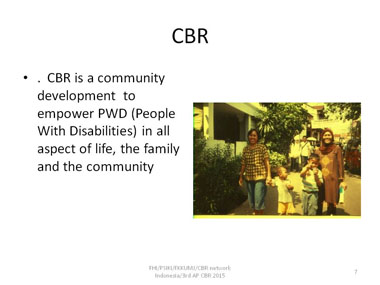 (Slide 7 text)
(Slide 7 text)
Slide 8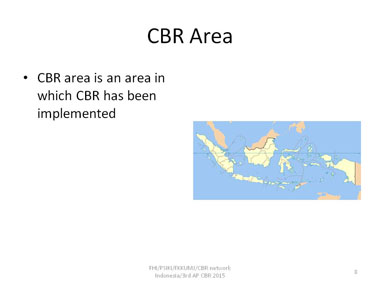 (Slide 8 text)
(Slide 8 text)
Slide 9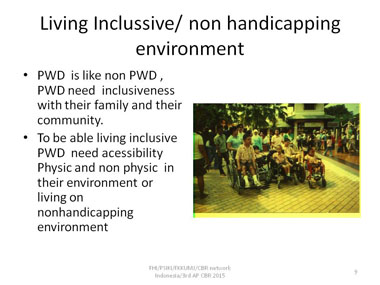 (Slide 9 text)
(Slide 9 text)
Slide 10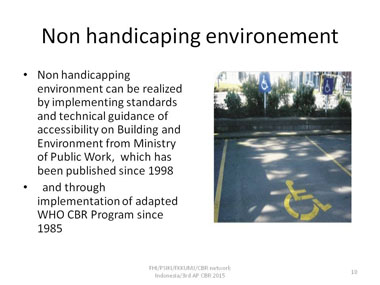 (Slide 10 text)
(Slide 10 text)
Slide 11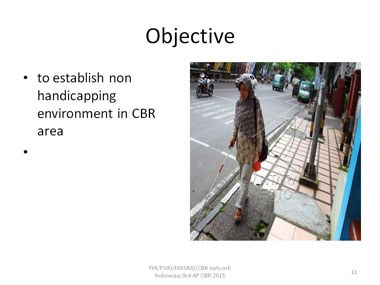 (Slide 11 text)
(Slide 11 text)
Slide 12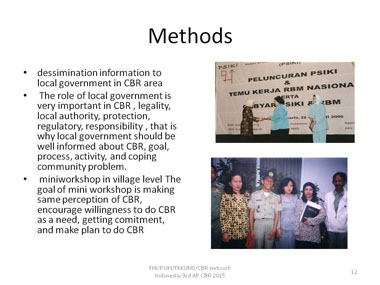 (Slide 12 text)
(Slide 12 text)
Slide 13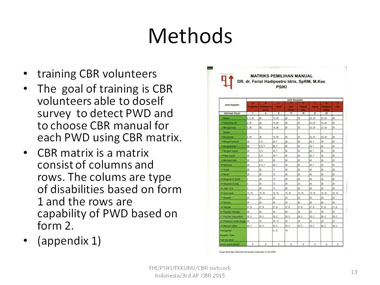 (Slide 13 text)
(Slide 13 text)
Slide 14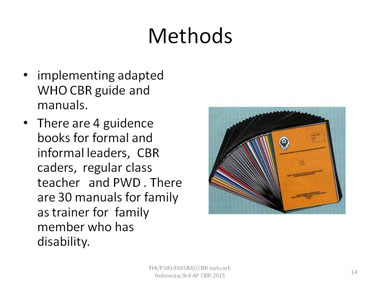 (Slide 14 text)
(Slide 14 text)
Slide 15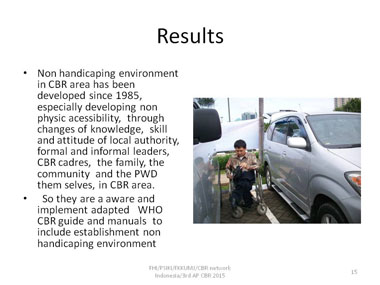 (Slide 15 text)
(Slide 15 text)
Slide 16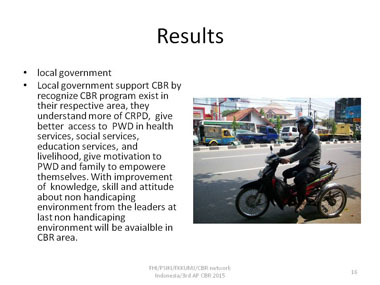 (Slide 16 text)
(Slide 16 text)
Slide 17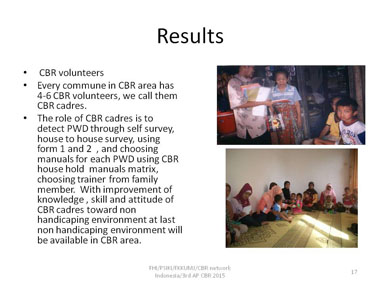 (Slide 17 text)
(Slide 17 text)
Slide 18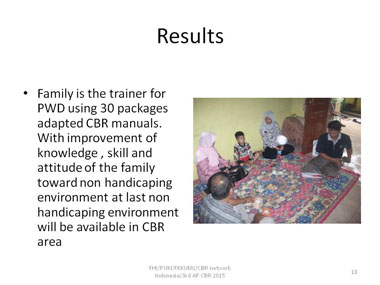 (Slide 18 text)
(Slide 18 text)
Slide 19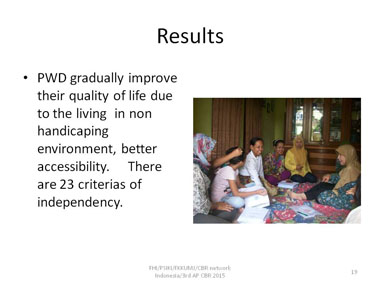 (Slide 19 text)
(Slide 19 text)
Slide 20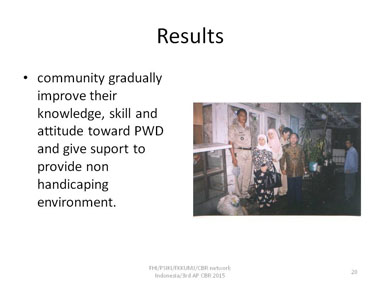 (Slide 20 text)
(Slide 20 text)
Slide 21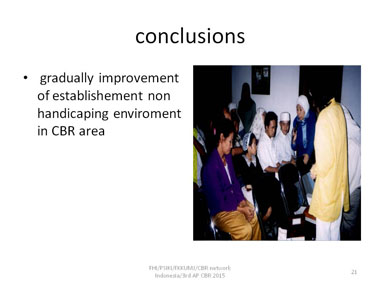 (Slide 21 text)
(Slide 21 text)
Slide 22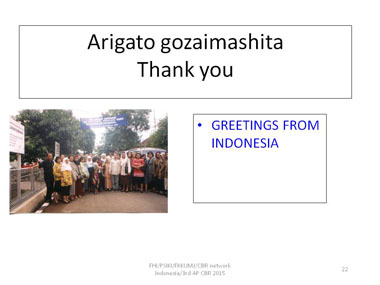 (Slide 22 text)
(Slide 22 text)

